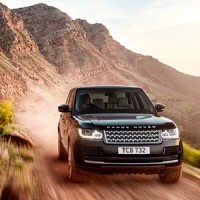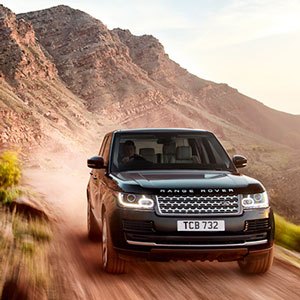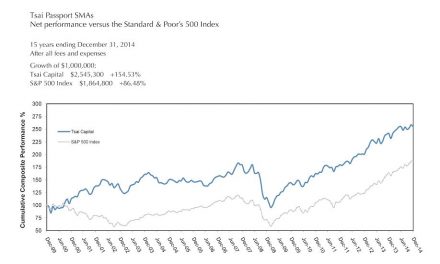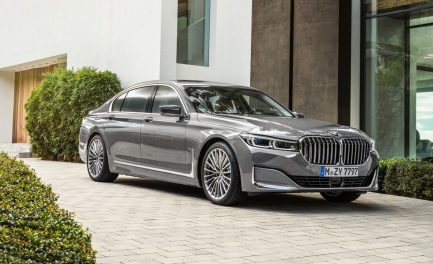
By GS Early – Liberty Investor
The Motor Trend SUV of the Year for 2012 is Tata Motor’s Range Rover Evoque.
That may not be too surprising, since the Land Rover badge has been a symbol of quality and durability for decades. What’s different now is that a few years ago, Land Rover, the automotive icon of the far-flung British empire, was sold from European hands to an Asian owner.
Similarly, the iconic Jaguar badge has traded hands a number of times and ended up in the same hands.
Both brands had been flagging for a number of years when sold out from their British owners. In Jaguar circles, many hard-core owners resented the fact that Ford Motor Co. (F) actually had the nerve to make Jags reliable. Part of owning an older Jag was swapping stories and bragging rights about their complete unreliability — about where your Jag had broken down and left you stranded.
While the Land Rover badge has been a mainstay in the roadless hinterlands across the globe, it took many years before someone (first BMW tried, then Ford) got the formula right.
Oddly enough, the company that got it right was headquartered in the former British colony of India. Tata Motors Limited (TTM) has become a global force in the auto, defense and commercial vehicle sectors.
Not only has it turned around two great brands with troubled pasts — Tata’s Jaguar Land Rover (JLR) division sales were up a record 29 percent last fiscal year (ended March 2012) and 48 percent for the quarter, year over year — but it has remade these two elite brands into a pair of global juggernauts.
It certainly doesn’t hurt that the India market has a population approaching 1 billion people and, as these folks continue to move up the economic ladder, they are able to buy cars in greater quantities.
And for those not yet at that economic inflection point, Tata is a leading builder of mass transportation vehicles (buses) in India as well as Spain, Brazil and South Korea. Simply put, Tata is now a global player of significance.
It’s selling into all emerging markets — 19 percent of JLR’s sales came from the China region — with a variety of models to meet every hopeful driver’s pocketbook. From the Nano, dubbed “the world’s cheapest car” and selling for about $2,500, to the new, luxurious Range Rover, Tata has a car or SUV for every price point.
One key to the company’s success has been to remain nimble as it has grown into a $27 billion company with a $68 billion market cap.
For example, when the Nano launched in 2009, it was sold as an affordable family car for the Indian market. And while sales were solid, there were issues with the original model that were hampering its broad adoption.
To Tata’s credit, it revamped the car and improved the build quality quickly. Sales have begun to grow steadily quarter after quarter. It’s this kind of responsiveness from a major auto firm that has helped move Tata into the ranks of the world-class auto manufacturers.
The company had to grow in very challenging markets. Its ability to quickly adapt to consumers’ desires and economic conditions is a model that big U.S. carmakers are adopting now that their lives’ have passed before their eyes in recent years.
The stock has bounced around recently, but it’s been in a long-term uptrend for quite some time. There is a lot of talk about the comeback of American automakers, but their growth is paltry compared to the run Tata is on.
What’s more, Tata continues to grow its sales in the emerging markets the U.S. car builders are now trying to develop for their products.
A Patriotic History
Tata was the first company from India’s engineering sector to be listed in the New York Stock Exchange (September 2004). India historically has been a very difficult market for outsiders to buy into, and there remain few ways to get a piece of this enormous and dynamic market.
Its roots go back to 1945 when it was a key player in building India’s military vehicles. It remains an important player in the defense sector. This is a solid revenue base since India is focused on developing its own defense systems instead of relying on outside contractors. And as India’s strategic interests grow with its economic power, so will its military.
This month, Tata announced:
Tata Motors Defence Solutions has delivered 21 Light Armoured Troop Carrier vehicles to the Gujarat Police, for strengthening its security preparedness.
Tata Motors Defence Solutions recently delivered 32 Mine Protected Vehicles (MPV) to the Maharashtra State Police, 5 MPVs to the Jharkhand State Police and another 122 Tata Light Armoured Troop Carriers to the central armed police forces.
Even if car and truck sales slow, which has been happening, the increased military demand should easily make up for the gap. Remember: India is bordered by Pakistan and China, and both are growing their militaries.
A domestic company that can provide the military hardware needed by the nation is a huge asset.
A Global Reach
Currently, Tata Motors has operations in the U.K., South Korea, Thailand, Spain and South Africa. Along with the JLR division that it acquired in 2008, it acquired the Daewoo Commercial Vehicle Company, South Korea’s second largest truck maker in 2004. Today, two-thirds of heavy commercial vehicle exports out of South Korea are from Tata Daewoo.
In 2009, Tata Motors acquired Hispano Carrocera, S.A., a top Spanish bus and coach manufacturer. And in 2006, Tata Motors formed a joint venture with the Brazil-based Marcopolo, a global leader in body-building for buses and coaches, to manufacture fully built buses and coaches for India and select international markets.
In 2006, Tata Motors entered into joint venture with Thonburi Automotive Assembly Plant Co. Ltd. of Thailand to manufacture and market Tata’s Xenon diesel pickup trucks in Thailand. Since its launch in 2007, Xenon has been selling like hotcakes across Asia, parts of Europe and Latin America. As a matter of fact, the Xenon is Tata’s bestselling vehicle in Europe.
So with Tata you get a major player in India, China, South Korea, Brazil, Europe and Thailand. And it’s been around for almost 70 years. That’s quite a combination for a great long-term total return play.
Because, you see, Tata is more than a bet on growth. Like any world-class industrial company, Tata kicks off a nice little dividend to keep shareholders happy through down cycles. The dividend now sits around 2 percent, which sits slightly below the average dividend yield for the Standard & Poor’s 500 index but offers more growth than many of its S&P counterparts.
And it’s certainly better than buying Treasuries.
— GS Early







